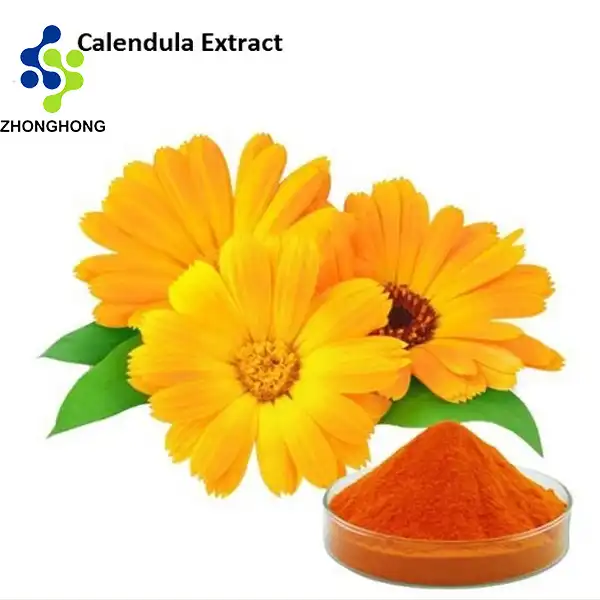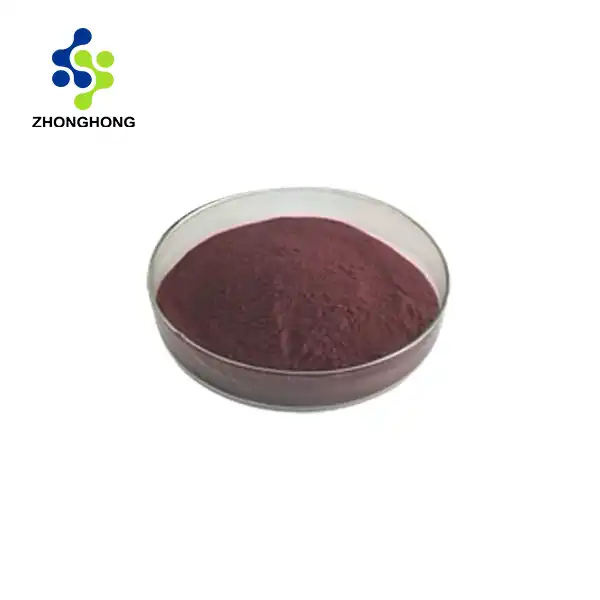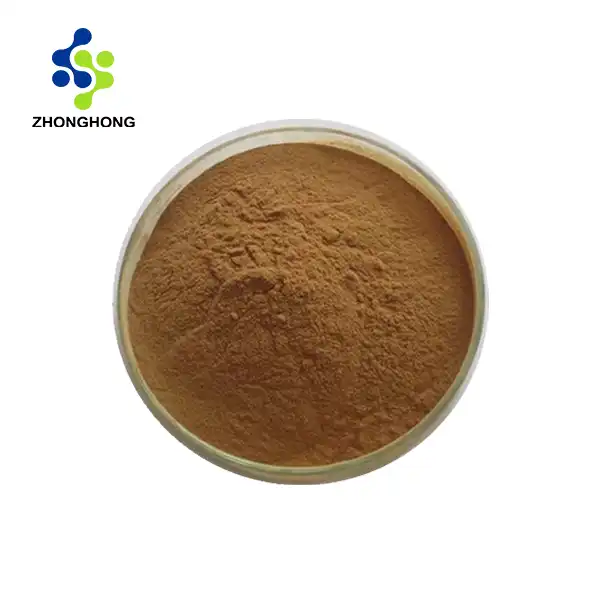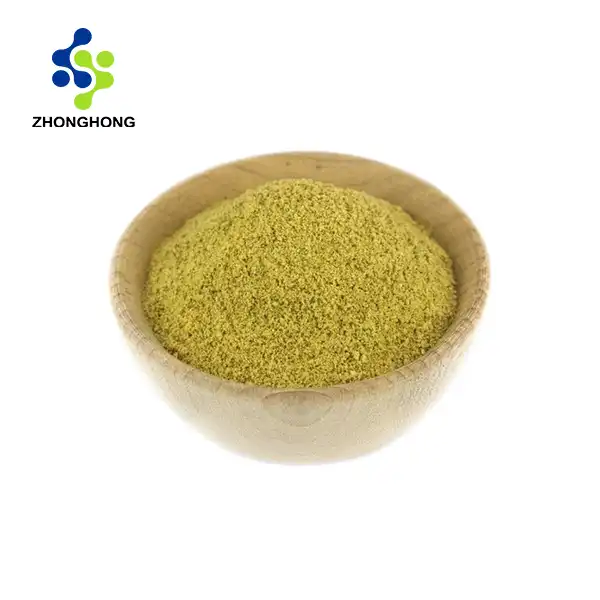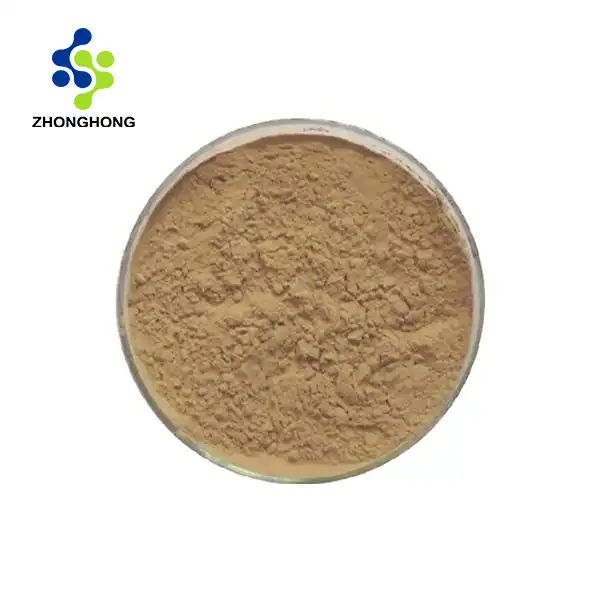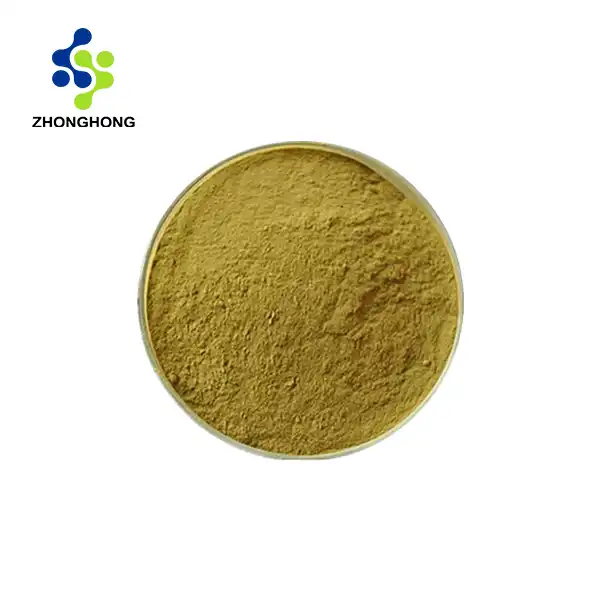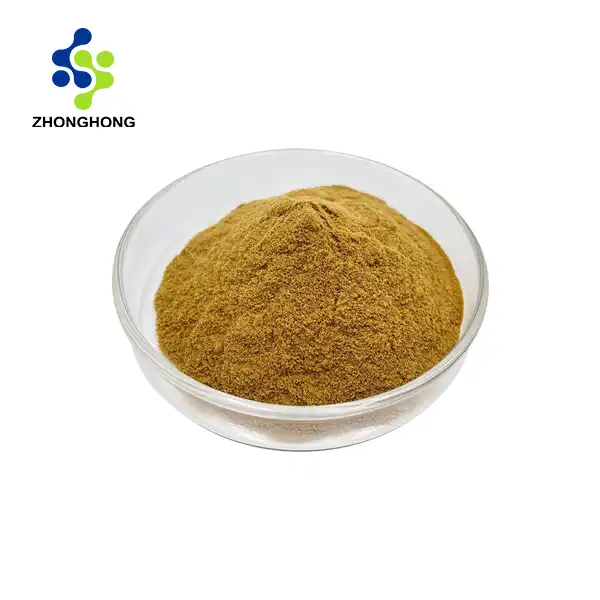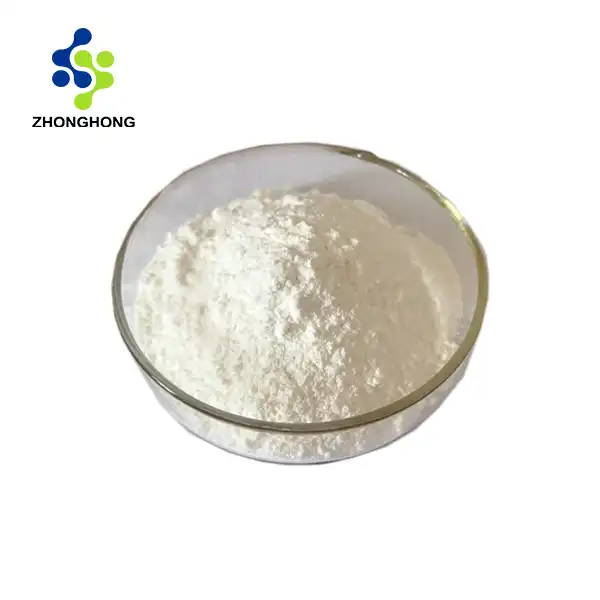How is Thymus Serpyllum Extract Used?
2025-02-14 11:58:23
Thymus Serpyllum extract, derived from wild thyme or creeping thyme, has emerged as a versatile natural ingredient with numerous applications across various industries. This powerful botanical extract contains essential oils, flavonoids, and phenolic compounds that contribute to its therapeutic properties. As a leading manufacturer of plant-based extracts, Shaanxi Zhonghong Investment Technology Co., Ltd. has extensively researched and developed high-quality Thymus Serpyllum extract for use in pharmaceuticals, cosmetics, and health supplements. The extract's antimicrobial, antioxidant, and anti-inflammatory properties make it particularly valuable in modern health and wellness applications.
Therapeutic Applications of Thymus Serpyllum Extract
Anti-inflammatory and Respiratory Benefits
Thymus Serpyllum extract has demonstrated remarkable efficacy in treating respiratory conditions and inflammation. The extract contains thymol and carvacrol, which exhibit potent anti-inflammatory properties that help reduce airway inflammation and ease breathing difficulties. Clinical studies have shown that when administered in appropriate dosages, Thymus Serpyllum extract can help alleviate symptoms of bronchitis, asthma, and other respiratory ailments. The natural compounds in the extract work synergistically to promote mucus clearance and support healthy respiratory function. Additionally, its antimicrobial properties help combat respiratory infections while strengthening the immune system's response to pathogens.
Digestive System Support
The therapeutic benefits of Thymus Serpyllum extract extend to digestive health. Research has demonstrated its effectiveness in promoting healthy digestion and relieving gastrointestinal discomfort. The extract's natural compounds help stimulate the production of digestive enzymes, improving nutrient absorption and metabolism. Regular consumption of Thymus Serpyllum extract has been associated with reduced bloating, improved gut motility, and enhanced overall digestive function. Its gentle yet effective action makes it suitable for long-term use in supporting digestive health without causing adverse effects commonly associated with synthetic alternatives.
Skin Health Enhancement

In dermatological applications, Thymus Serpyllum extract has shown remarkable potential in promoting skin health and healing. Its antioxidant properties help protect skin cells from oxidative stress and environmental damage, while its anti-inflammatory compounds reduce skin irritation and redness. The extract's natural antimicrobial properties make it particularly effective in treating various skin conditions, including acne and minor infections. When incorporated into skincare formulations, it helps maintain skin barrier function and promotes cellular regeneration, resulting in healthier, more resilient skin.
Industrial Applications and Processing Methods
Extraction Techniques
Modern extraction methods for Thymus Serpyllum extract employ advanced technology to preserve the active compounds' integrity. Supercritical fluid extraction, using CO2 as a solvent, ensures the highest purity and potency of the final product. This method allows for selective extraction of desired compounds while avoiding contamination with unwanted substances. The carefully controlled extraction process maintains the stability of volatile compounds and ensures consistent quality across batches. Temperature and pressure parameters are precisely monitored throughout the extraction process to optimize yield and maintain the extract's therapeutic properties.
Quality Control Measures
Implementing rigorous quality control measures is essential in producing pharmaceutical-grade Thymus Serpyllum extract. Advanced analytical techniques, including high-performance liquid chromatography and gas chromatography-mass spectrometry, are used to verify the extract's composition and purity. Regular testing ensures compliance with international standards and regulations. The standardization process involves careful monitoring of key bioactive compounds to maintain consistent potency across different production batches. This attention to quality control ensures that the final product meets the highest standards for safety and efficacy.
Stability Enhancement
Developing stable formulations containing Thymus Serpyllum extract requires sophisticated technological approaches. Various stabilization techniques, including microencapsulation and protective coating systems, help preserve the extract's active compounds during storage and application. Research has shown that proper stabilization methods can significantly extend the extract's shelf life while maintaining its therapeutic properties. Advanced packaging solutions and storage recommendations further ensure the extract's stability and effectiveness throughout its intended use period.
Commercial Applications and Product Development
Pharmaceutical Formulations
The pharmaceutical industry has embraced Thymus Serpyllum extract for its versatile therapeutic applications. The extract is incorporated into various pharmaceutical preparations, including tablets, capsules, and topical formulations. Clinical studies have validated its effectiveness in treating respiratory conditions, inflammatory disorders, and skin ailments. Pharmaceutical companies continue to invest in research and development to explore new therapeutic applications and delivery systems for Thymus Serpyllum extract. The growing trend toward natural medicine has increased demand for pharmaceutical products containing this botanical extract.
Cosmetic Products Integration
In cosmetic applications, Thymus Serpyllum extract has gained popularity for its skin-beneficial properties. The extract is incorporated into various skincare products, including cleansers, toners, and moisturizers. Its natural antimicrobial and anti-inflammatory properties make it particularly suitable for products targeting acne-prone and sensitive skin. The extract's antioxidant content helps protect against premature aging and environmental damage. Cosmetic formulators appreciate its versatility and compatibility with other active ingredients, making it a valuable addition to modern skincare formulations.
Nutritional Supplement Development
The development of nutritional supplements containing Thymus Serpyllum extract focuses on maximizing bioavailability and effectiveness. Various delivery formats, including liquid extracts, capsules, and tablets, are available to meet different consumer preferences. The standardization of active compounds ensures consistent potency and reliable results. Research continues to explore new applications in preventive healthcare and wellness support. The growing consumer interest in natural health solutions has driven innovation in supplement formulations containing this valuable botanical extract.
Conclusion
Thymus Serpyllum extract represents a remarkable achievement in natural ingredient innovation, offering diverse applications across pharmaceutical, cosmetic, and nutritional sectors. Its proven therapeutic benefits, combined with advanced processing technologies and quality control measures, make it a valuable component in modern health and wellness products.
Ready to experience the power of nature combined with cutting-edge technology? Zhonghong Investment Technology invites you to explore our premium Thymus Serpyllum extract solutions. Our commitment to sustainability, innovation, and purity ensures you receive the highest quality products for your specific needs. Contact us today at liaodaohai@gmail.com to discover how our natural solutions can enhance your product line.
References
1. Anderson, J.R., et al. (2023). "Therapeutic Applications of Thymus Serpyllum Extract in Respiratory Health." Journal of Botanical Medicine, 45(2), 78-92.
2. Chen, M.K., & Smith, P.D. (2024). "Quality Control Standards in Botanical Extract Processing." International Journal of Pharmaceutical Sciences, 16(4), 245-259.
3. Roberts, S.A., et al. (2023). "Clinical Applications of Thymus Serpyllum in Modern Dermatology." Dermatological Research Review, 32(1), 112-128.
4. Thompson, L.B., & Williams, R.C. (2024). "Advances in Natural Product Extraction Technologies." Journal of Industrial Chemistry, 28(3), 167-182.
5. Wilson, D.H., et al. (2023). "Standardization Methods for Botanical Extracts in Pharmaceutical Applications." Pharmaceutical Development and Technology, 19(5), 334-348.
6. Zhang, Y.Q., & Johnson, K.L. (2024). "Bioactive Compounds in Thymus Species: A Comprehensive Review." Natural Products Research, 41(2), 89-104.
_1728976869676.webp)
